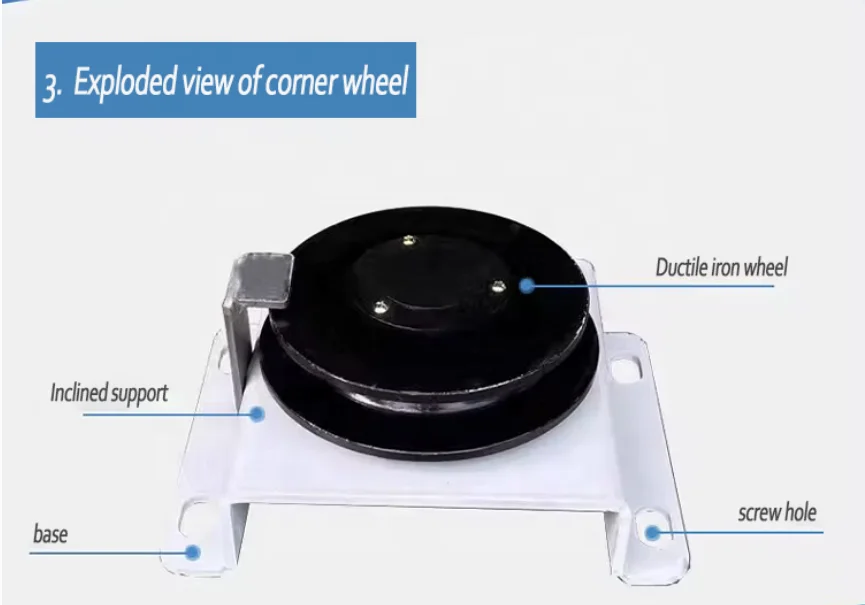Wire Chicken Coop Design for Optimal Space and Comfort for Your Birds
Oct . 22, 2024 03:46 Back to list
Wire Chicken Coop Design for Optimal Space and Comfort for Your Birds
The Wire Chicken Cage A Practical Solution for Poultry Farmers
In the realm of poultry farming, choosing the right housing for chickens is crucial. Among various options available, the wire chicken cage stands out as a practical and efficient solution for many farmers. This article explores the advantages, construction, and best practices associated with wire chicken cages.
Advantages of Wire Chicken Cages
1. Ventilation and Hygiene One of the primary benefits of using wire chicken cages is the enhanced ventilation they provide. The open structure allows for optimal air circulation, which is vital for the health of the chickens. Good airflow helps in maintaining a cooler environment during hot months and reduces the chances of respiratory diseases among the flock. Additionally, the wire design facilitates easy cleaning, which is essential in maintaining hygiene and prevents the buildup of waste and bacteria.
2. Space Efficiency Wire chicken cages maximize space utilization, allowing farmers to house more birds in a limited area. This is especially beneficial for small-scale poultry farms that may not have extensive land available. The ability to stack cages vertically means that farmers can efficiently use their vertical space, optimizing the farm's overall productivity.
3. Safety and Security Wire cages provide a secure environment for chickens, protecting them from predators. The sturdy wire mesh acts as a barrier, preventing unwanted animals from accessing the birds. This security is particularly important for free-range systems where chickens might be at risk of attacks from larger animals.
4. Controlled Breeding and Egg Production For farmers focused on egg production, wire cages allow for better management of breeding processes. By keeping hens in individual cages, farmers can monitor their diets and health more closely, facilitating optimal conditions for egg-laying. This controlled environment can lead to improved egg production rates and overall flock health.
wire chicken cage

5. Cost-Effectiveness Compared to wooden or solid-walled structures, wire chicken cages are often more affordable and easier to construct. The materials required for wire cages are relatively inexpensive, making it accessible for farmers, particularly those starting their poultry operations.
Construction and Best Practices
Building a wire chicken cage requires careful planning and attention to detail. The first step is to choose high-quality, rust-resistant wire that will withstand the elements and protect the birds. A common specification is using 1/2 inch by 1-inch wire mesh for security against predators, while allowing for good airflow.
The dimensions of the cages should be comfortable for the chickens, with enough space for them to move around freely. A recommended space allowance is about 1.5 to 2 square feet per bird. Providing perches, nesting boxes, and feeding areas within the cage will help improve the overall well-being of the chickens.
Regular maintenance is also key to the success of a wire chicken cage system. Farmers should routinely inspect the cages for any signs of wear and tear, ensuring that there are no sharp edges or weakened areas that could harm the birds. Cleaning the cages frequently will help prevent disease and keep the chickens healthy.
Conclusion
In summary, wire chicken cages offer a myriad of benefits for poultry farmers looking to optimize their operations. From improved ventilation to enhanced protection against predators, these cages provide a practical solution that aligns with modern agricultural practices. By investing in quality materials and maintaining best practices in construction and care, farmers can ensure a productive and healthy environment for their chickens, ultimately leading to a successful poultry farming venture. As the demand for poultry products continues to rise, so too does the importance of adopting efficient and effective housing solutions like wire chicken cages.
-
Hot Sale 24 & 18 Door Rabbit Cages - Premium Breeding Solutions
NewsJul.25,2025
-
Automatic Feeding Line System Pan Feeder Nipple Drinker - Anping County Yize Metal Products Co., Ltd.
NewsJul.21,2025
-
Automatic Feeding Line System Pan Feeder Nipple Drinker - Anping County Yize Metal Products Co., Ltd.
NewsJul.21,2025
-
Automatic Feeding Line System - Anping Yize | Precision & Nipple
NewsJul.21,2025
-
Automatic Feeding Line System - Anping Yize | Precision & Nipple
NewsJul.21,2025
-
Automatic Feeding Line System-Anping County Yize Metal Products Co., Ltd.|Efficient Feed Distribution&Customized Animal Farming Solutions
NewsJul.21,2025






